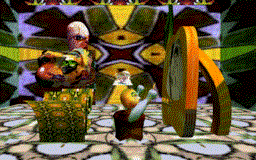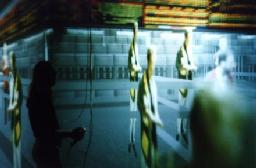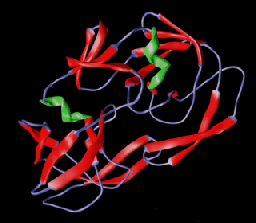Increasingly people are fascinated by the prospect of networking remote VR devices over high speed, broad bandwidth networks which enables long distance collaboration or experience as remotely located participants share a common virtual world. Presently a high level of technical expertise is necessary for networked VR.

Visual artists are embracing virtual reality as a new medium for their work. Artists experimenting with this medium have produced work which is abstract, formal, surreal, political. metaphorical, & psychological. Three main areas of focus are; exploiting the interactive aspect of VR; using procedural methods to create imagery; and immersing the viewer/user in a visually rich 3D environment. Sound artists are also embracing virtual reality.
- Art Applications - selected list

Writers, performers and dramatists are being increasingly drawn to VR as a new realm for their work. These applications stress the aliveness of a virtual world by adding virtual or real actors.
- Story-Telling/Performance Applications - selected list

VR is a powerful tool for cultural heritage projects. It allows visitors to virtually experience reconstructions of architectural & archeological sites which are now in ruins, in inaccessible locations, or too fragile to allow for a constant stream of visitors. Pioneer workers in this field are also moving beyond the model of a simple walk throughs of reconstructed sites to use the strengths of VR as an interactive device.
- Cultural Heritage Applications - selected list

VR applications have been developed to teach grade school children and medical students. A 3D environment is paricularly suited for teaching concepts or structures with a 3D nature. Experiments are ongoing to test the effectiveness of VR as an educational tool and into remote learning using VR.
- Education & Medicine - selected list

VR is fast becoming a useful tool for prototyping, design review and collaborative design.Architecture, Industry & Design - selected list

VR is used to help scientists visualize, model and interact with a wide variety of data sets - from molecules to volcanoes.
- Scientific Visualization - selected list